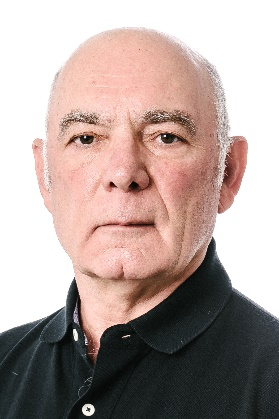
Reporter: Yury Stepanyants University of South Queensland, Australia
Report topic:Frequency downsting within the decaying wavetrains in an ocean covered by ice floes.
Report time: 14:00-16:00,20th September, 2023 (Wednesday)
Report location: Conference Room 315, Ship Marine Building (offline)
Brief introduction of the reporter
Yury Stepanyants graduated from the Gorky State University (Russia) in 1973 with the MS Diploma and started to work as an Engineer with the Gorky Research Radiophysical Institute. Then, he proceeded his career with the Institute of Applied Physics (Nizhny Novgorod, Russia) taking successively the positions of Junior, Senior, and Leading Research Scientist from 1977 to 1997. In the period of 1984 – 1997, he worked at the Nizhny Novgorod State Technical University in Russia taking successively positions of Senior Lecturer, Associate Professor, and Full professor. In 1983 Yury obtained a PhD in Physical Oceanography, and in 1992 he obtained the degree of Doctor of Sciences in Geophysics. In 1995 he was granted the title of Professor of Applied Mathematics in Russia, and in 2004 – the title of the University Professor of Mechanics in France. After immigrating to Australia in 1998, Yury worked for 11 years as the Senior Research Scientist with the Australian Nuclear Science and Technology Organisation (Sydney). Since July 2009 he has been working at the University of Southern Queensland holding positions of Associate Professor and Full Professor (from 2014). Yury has more than 170 publications including books, book chapters, review articles, and journal papers. In 2022 he obtained an international Zaslavsky Award for contribution in Nonlinear Science and Complexity.
Report summary
We study a frequency downshifting within wavetrains propagating in an ocean covered by ice floes. Using the empirical model which suggests that small-amplitude surface waves in such an environment decay exponentially with the decay rate depending on frequency as ki ~ w3, we derive first the apparent frequency downshifting of a wavetrain within the framework of the linear theory. Such the apparent downshifting appears due to the faster decay of high-frequency components compared to the low-frequency components with no energy flux along the spectrum. Then, we consider a nonlinear model based on the nonlinear Schrödinger equation augmented by the empirical dissipative terms. This model accounts for an energy flux along the spectrum down to lower frequencies. Using the asymptotic approach, we derive a frequency downshifting for a decaying envelope soliton. The comparison of downshiftings obtained within the framework of the linear and nonlinear models shows that the results depend on the dissipation parameter and frequency of the carrier wave; therefore, in some cases the downshifting in the linear case is greater than in the nonlinear case, whereas in with other parameters the situation can be reverse. In conclusion, estimates for the real oceanic conditions are provided.
host unit:
School of Shipbuilding Engineering, Harbin Engineering University
organizer:
General Technology Institute for Ship and Marine Platform
The Belt and Road Joint Laboratory of China-Russia Polar Technology and Equipment of the Ministry of Science and Technology
Key Laboratory of Polar Equipment and Technology, Ministry of Industry and Information Technology
Joint Laboratory of International Cooperation between Ship and Marine Engineering Technology of the Ministry of Education
The National International Joint Research Center for Marine Engineering and Marine Engineering Mechanics of the Ministry of Science and Technology.
Youth Science and Technology Association, School of Shipbuilding Engineering, Harbin Engineering University